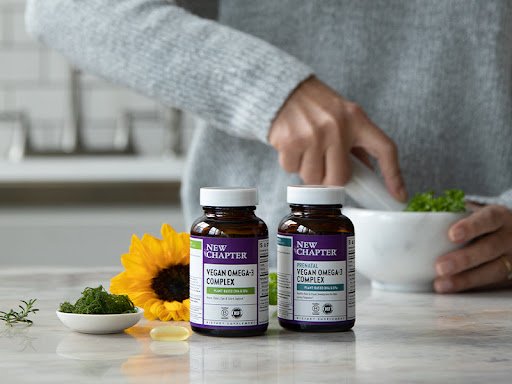Plant-based omega-3 supplementation has evolved significantly with advances in algae cultivation technology and extraction methods that now deliver EPA and DHA concentrations comparable to fish oil products. Selecting the best vegan Omega-3 supplement requires understanding bioavailability differences, molecular stability factors, and dosage requirements specific to algae-derived sources versus traditional marine oils. Clinical research published in the Journal of Nutritional Science demonstrates that algae-based omega-3 supplements achieve plasma EPA and DHA levels within 5-10% of fish oil equivalents when adjusted for bioavailability factors. Third-party testing reveals significant variability in potency and purity among vegan omega-3 products, with premium formulations containing 250-500mg combined EPA/DHA per capsule and oxidative stability markers below 5 milliequivalents per kilogram.
Algae Species and Cultivation Methods
Commercial omega-3 production utilizes specific microalgae strains including Schizochytrium sp. and Crypthecodinium cohnii, each producing different ratios of EPA to DHA fatty acids. Schizochytrium typically yields 40-60% DHA content with minimal EPA, while Crypthecodinium produces primarily DHA with trace EPA levels, requiring blended formulations to achieve optimal fatty acid profiles.
Cultivation methodologies significantly impact final product quality, with closed-system fermentation providing superior contamination control compared to open pond systems. Fermentation-based production eliminates heavy metal contamination risks associated with marine environments while ensuring consistent fatty acid profiles independent of seasonal variations or environmental pollutants.
Extraction processes determine molecular integrity and bioavailability, with supercritical CO2 extraction preserving omega-3 structure while eliminating solvent residues. Traditional hexane extraction, while cost-effective, may introduce trace solvent contamination and cause molecular degradation that reduces therapeutic efficacy.
Bioavailability and Absorption Factors
Vegan omega-3 supplements demonstrate different absorption kinetics compared to fish oil due to triglyceride versus ethyl ester molecular forms. Algae-derived omega-3s typically exist in triglyceride form, which shows 50% better absorption than ethyl ester forms common in processed fish oils, particularly when consumed with dietary fats.
Phospholipid-bound omega-3 formulations enhance bioavailability through improved cellular membrane integration, with studies showing 2-3 times higher tissue incorporation compared to standard triglyceride forms. These enhanced formulations utilize proprietary encapsulation technologies that protect fatty acids from oxidation while facilitating absorption.
Gastric stability becomes crucial for maintaining omega-3 integrity through digestive processes, with enteric-coated capsules preventing degradation in acidic stomach conditions. Quality formulations include natural antioxidants like mixed tocopherols or astaxanthin that prevent rancidity and maintain potency throughout shelf life.
Dosage Optimization and Therapeutic Ranges
Clinical efficacy studies establish minimum effective doses of 250-500mg combined EPA/DHA daily for cardiovascular support, with higher doses of 1000-2000mg demonstrating anti-inflammatory benefits. Vegan supplements may require 20-30% higher dosing compared to fish oil to achieve equivalent tissue levels due to absorption differences.
EPA to DHA ratios affect therapeutic outcomes, with 2:1 or 3:1 EPA:DHA ratios optimal for inflammatory conditions, while 1:2 DHA:EPA ratios support cognitive function and brain health. Many algae-based supplements provide primarily DHA, requiring careful selection or combination products to achieve desired ratios.
Individual response variability depends on genetic factors affecting fatty acid metabolism, with approximately 15-20% of individuals showing reduced conversion efficiency from shorter-chain omega-3 precursors. Direct EPA/DHA supplementation bypasses these metabolic limitations, ensuring consistent therapeutic levels regardless of genetic variations.
Quality Assurance and Testing Standards
Third-party testing protocols verify omega-3 content accuracy, with many products showing 10-25% deviation from label claims due to oxidation or manufacturing variability. Premium supplements undergo potency testing at multiple production stages and include certificates of analysis documenting actual EPA/DHA content.
Oxidative stability testing measures peroxide values, anisidine values, and total oxidation (TOTOX) levels that indicate freshness and quality. Quality standards typically require peroxide values below 5 mEq/kg and TOTOX values under 26, with fresher products showing significantly lower oxidation markers.
Contaminant screening includes testing for heavy metals, pesticides, and microbial contamination that could affect product safety. Algae-based supplements generally show lower contamination risks compared to marine-derived oils, but quality manufacturers maintain comprehensive testing protocols for all potential contaminants.
Formulation Considerations and Delivery Systems
Capsule materials affect product stability and consumer acceptance, with vegetarian capsules utilizing cellulose or modified starch instead of gelatin. Soft gel capsules provide better oxygen barriers but may require synthetic materials, while hard capsules offer improved stability for sensitive formulations.
Combination formulations include complementary nutrients like vitamin D3, CoQ10, or astaxanthin that enhance omega-3 utilization or provide synergistic benefits. These multi-nutrient approaches simplify supplementation regimens while potentially improving overall efficacy through nutrient interactions.

